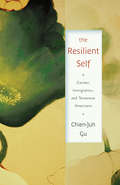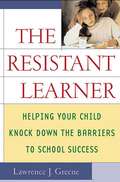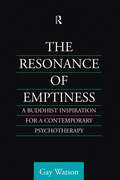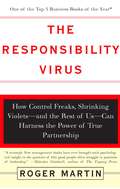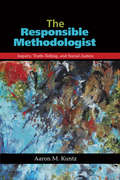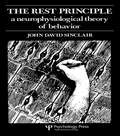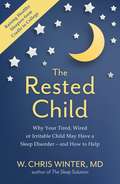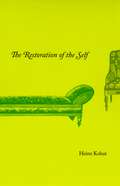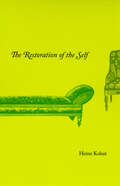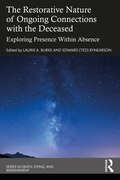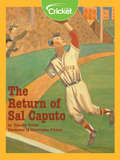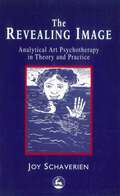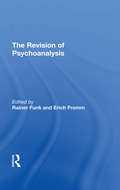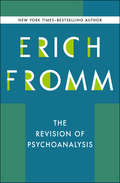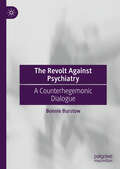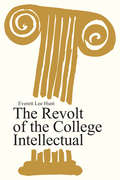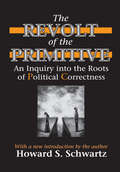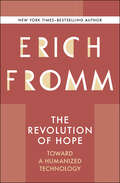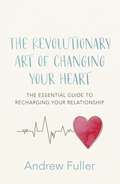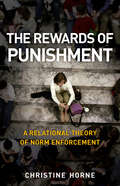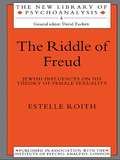- Table View
- List View
The Resilient Self: Gender, Immigration, and Taiwanese Americans
by Chien-Juh GuThe Resilient Self explores how international migration re-shapes women’s senses of themselves. Chien-Juh Gu uses life-history interviews and ethnographic observations to illustrate how immigration creates gendered work and family contexts for middle-class Taiwanese American women, who, in turn, negotiate and resist the social and psychological effects of the processes of immigration and settlement. Most of the women immigrated as dependents when their U.S.-educated husbands found professional jobs upon graduation. Constrained by their dependent visas, these women could not work outside of the home during the initial phase of their settlement. The significant contrast of their lives before and after immigration—changing from successful professionals to foreign housewives—generated feelings of boredom, loneliness, and depression. Mourning their lost careers and lacking fulfillment in homemaking, these highly educated immigrant women were forced to redefine the meaning of work and housework, which in time shaped their perceptions of themselves and others in the family, at work, and in the larger community.
The Resistant Learner
by Lawrence J. GreeneAddressing the emotional and academic needs of kids in grades four through twelve, Lawrence Greene examines the counterproductive behaviors and attitudes that undermine academic performance, diminish self-esteem and limit educational and career options. Each chapter focuses on a particular deficit area and offers accessible, hands-on methods for parents to guide and mentor their struggling child. Parents learn how to: * Help their child identify natural talents and use them when learning * Choose a democratic or autocratic approach to modifying behavior * Use the DIBS system to solve problems * Open an effective dialogue with their child * Express positive expectations and affirm and praise effort and progress * And much more
The Resonance of Emptiness: A Buddhist Inspiration for Contemporary Psychotherapy (Routledge Critical Studies in Buddhism #Vol. 5)
by Gay WatsonThis work presents an exploration of Buddhist philosophy and practice as a potential resource for an approach to psychotherapy which is responsive to the needs of its time and context, and attempts to open up a three-way dialogue between Buddhism, psychotherapy and contemporary discourse to reveal a meaningful theory and practice for a contemporary psychotherapy.
The Resources of the Past in Early Medieval Europe
by Rosamond Mckitterick Clemens Gantner Rosamond McKitterick Sven Meeder Clemens GantnerThis volume analyses the importance of history, the textual resources of the past and the integration of Christian and imperial Rome into the cultural memory of early medieval Europe within the wider question of identity formation. The case studies in this book shed new light on the process of codification and modification of cultural heritage in the light of the transmission of texts and the extant manuscript evidence from the early middle ages. The authors demonstrate how particular texts and their early medieval manuscript representatives in Italy, Francia, Saxony and Bavaria not only reflect ethnic, social and cultural identities but themselves contributed to the creation of identities, gave meaning to social practice, and were often intended to inspire, guide, change, or prevent action, directly or indirectly. These texts are shown to be part of a cultural effort to shape the present by restructuring the past.
The Responsibility Virus
by Roger L. MartinA Triumph. Few management books have ever brought such psychological insight to the question of why good people often struggle in positions of leadership. -Malcolm Gladwell, author of "The Tipping Point"
The Responsible Methodologist: Inquiry, Truth-Telling, and Social Justice
by Aaron M KuntzWhat does it mean to be a responsible methodologist? Certainly it is more than being a research middle-manager who ensures that the tools used in a thesis or dissertation are of the right gauge. In The Responsible Methodologist, leading education scholar Aaron Kuntz uses the latest movements in social theory to challenge qualitative researchers to reconceptualize their work away from the technocratic toward an intervention, an ethical disruption of the norm, an activist stance toward progressive social change. Inviting creativity and vision, he insists that the responsible methodologist become a force leading the discourse toward social justice. His book-challenges the technocratic role given to qualitative methodologists in university settings;-urges them to become a force for change through Foucault's parrhesia, risky truth-telling;-includes research projects that have incorporated this vision.
The Rest Principle: A Neurophysiological Theory of Behavior
by J. D. Sinclair John David SinclairFirst published in 1982. Routledge is an imprint of Taylor & Francis, an informa company.
The Rested Child: Why Your Tired, Wired, or Irritable Child May Have a Sleep Disorder - and How to Help
by W. Christopher WinterSleep disorders in children are on the rise. Experts have pronounced sleeplessness a 'hidden health crisis' for young people, with 10 percent of children presenting with diagnosable sleep disorders - but well over half are misdiagnosed. Every year, tens of thousands of children are treated for diseases such as diabetes, learning disorders, or chronic pain, when the real root cause of their ailment may actually be a sleep disorder for which they're not being treated.In this ground-breaking guide, neurologist and sleep expert Dr Chris Winter identifies the signs and symptoms of the most common sleep disorders affecting children today, and he empowers parents and caregivers to understand the steps necessary to address and treat their children's sleep problems. From common issues such as too much screen time and night terrors, to narcolepsy, sleep apnoea, and more, The Rested Child leaves no stone unturned. This book pulls back the curtain on the relationship between poor sleep quality and paediatric epidemics related to psychiatric health, rising obesity, ADD/ADHD, pain disorders, and other undiagnosed disorders of sleepiness and fatigue.Finally parents have a resource to help them uncover the root of their children's problems, and, more important, to provide the answers on how to help.
The Restoration of the Self
by Heinz KohutIn his foundational work The Restoration of the Self, noted psychoanalyst Heinz Kohut boldly challenges what he called "the limits of classical analytic theory" and the Freudian orthodoxy. Here Kohut proposes a "psychology of the self" as a theory in its own right- one that can stand beside the teachings of Freud and Jung. Using clinical data, Kohut explores issues such as the role of narcissism in personality, when a patient can be considered cured, and the oversimplifications and social biases that unduly influenced Freudian thought. This volume puts forth some of Kohut's most influential ideas on achieving emotional health through a balanced, creative, and joyful sense of self. "Kohut speaks clearly from his identity as a psychoanalyst-healer, showing that he is more of a psychoanalyst than most, and yet calling for major theoretical revisions including a redefinition of the essence of psychoanalysis."- American Journal of Psychotherapy
The Restoration of the Self
by Heinz KohutIn his foundational work The Restoration of the Self, noted psychoanalyst Heinz Kohut boldly challenges what he called “the limits of classical analytic theory” and the Freudian orthodoxy. Here Kohut proposes a “psychology of the self” as a theory in its own right—one that can stand beside the teachings of Freud and Jung.Using clinical data, Kohut explores issues such as the role of narcissism in personality, when a patient can be considered cured, and the oversimplifications and social biases that unduly influenced Freudian thought. This volume puts forth some of Kohut’s most influential ideas on achieving emotional health through a balanced, creative, and joyful sense of self."Kohut speaks clearly from his identity as a psychoanalyst-healer, showing that he is more of a psychoanalyst than most, and yet calling for major theoretical revisions including a redefinition of the essence of psychoanalysis.”—American Journal of Psychotherapy
The Restorative Nature of Ongoing Connections with the Deceased: Exploring Presence Within Absence (Series in Death, Dying, and Bereavement)
by Laurie A. BurkeThe Restorative Nature of Ongoing Connections with the Deceased is a guide to stimulating thought and discussion about ongoing attachments between bereaved individuals and their deceased loved ones. Chapters promote broad, inclusive training and dialogue for working with clients who establish and/or maintain a restorative connection with their deceased loved one as well as those who find aspects of such connections to be psychologically or spiritually problematic or troublesome. Bereavement professionals will come away from this book with a better understanding and a deeper skillset for helping clients to develop continuing bonds.
The Retina: An Approachable Part of the Brain, Revised Edition (Belknap Press Ser.)
by John E. DowlingThe Retina (1987) quickly became the most widely recognized introduction to the structure and function of retinal cells. In this easy-to-read Revised Edition, John Dowling draws on twenty-five years of new research to produce an interdisciplinary synthesis focused on how retinal function contributes to our understanding of brain mechanisms.
The Return of Sal Caputo
by Timothy TocherAfter Lou's dad gets drafted to fight in World War II, father and son write many letters to each other—mainly about their favorite sport, baseball. Lou worries when those letters suddenly stop coming.
The Revealing Image: Analytical Art Psychotherapy in Theory and Practice
by Joy SchaverienSchaverien painstakingly describes and defines "processes which have so far only been intuitively known to art therapists" (p6) by introducing and elaborating the psychoanalytical concepts of transference and countertransference in relation to the use of visual art objects. The authors stated intention in this book is "to attempt to bridge the perceived gap between the practice of art therapy and analytical forms of psychotherapy..."(p 229) The epistemological base of this venture includes the fields of philosophy, anthropology, and aesthetics, as well as psychoanalysis.Schaverien suggests that analytical art psychotherapy is a way of working analytically with patients who are unsuitable, or unready, for psychotherapy, giving examples of psychotic and borderline patients, children, and patients in psychiatric settings.This is primarily a book about an analytical approach within art therapy, which may be of interest in itself. The material also raises issues of interest to analysts and psychotherapists, whether or not they work with art in the clinical setting. The book clarifies areas of similarity between the disciplines, and also makes areas of difference apparent. For example, most analysts would agree that visual art, like dream material, and other non-verbal representations of the inner world, can at times articulate and communicate meanings which for one reason or another cannot be verbally articulated at the time, and that this can be pertinent to the aim of analysis. However, I think few analysts would include facilities in their consulting rooms for the kind of art processes described in the book.When the analyst is working with materials in this form, the book will be extremely helpful in sorting out the complexity of the transference situation and the role of interpretation. The book is so strongly grounded in experiences emerging in the presence of actual art processes and objects that I think it will be of most interest to those who are interested in the specific clinical issues involved in relating to the making and use of actual art objects within the setting. Schaverien not only describes the processes involved in detail, but also presents technical approaches to the making and handling of art objects within the setting which will inform the capacity of those who are not trained as art therapists to relate to this kind of material in the consulting room.'
The Revision Of Psychoanalysis
by Erich Fromm Rainer FunkIn 1965 Erich Fromm became professor emeritus of psychoanalysis at the National Autonomous University of Mexico City. In the same year he finished his field research on the social character of the Mexican peasant village Chiconcuac. Released from his obligations at the university and free for a new project, he applied to various funding organizations for money to undertake a "Systematic Work on Humanistic Psychoanalysis," which he had decided to write in the course of the next few years. It was conceived as a work of three to four volumes that would deal with the complete range of psychoanalytic theory and practice. He intended nothing less than a dialectic revision.
The Revision of Psychoanalysis
by Erich FrommBestselling author Erich Fromm revisits Sigmund Freud&’s work, ushering psychoanalysis into the modern ageIn The Revision of Psychoanalysis, renowned psychoanalyst and social psychologist Erich Fromm applies his innovative, humanist approach to Freud&’s often contradictory ideas. Fromm pays special attention to the fact that human beings&’ main problem has been the way they are related to the outer world, to others, and to themselves. Human passions and their effects have to be explained differently than Freud did, and psychoanalysis must be revised to accommodate this—a fact Fromm explains in his typically brilliant way. The result is a comprehensive, updated look at psychoanalysis and humanistic thinking that is as relevant today as when it was first written. This ebook features an illustrated biography of Erich Fromm including rare images and never-before-seen documents from the author&’s estate.
The Revolt Against Psychiatry: A Counterhegemonic Dialogue
by Bonnie BurstowA real eye-opener, this riveting anti/critical psychiatry book is comprised of original cutting-edge dialogues between Burstow (an antipsychiatry theorist and activist) and other leaders in the “revolt against psychiatry,” including radical practitioners, lawyers, reporters, activists, psychiatric survivors, academics, family members, and artists. People in dialogue with the author include Indigenous leader Roland Chrisjohn, psychiatrist Peter Breggin, survivor Lauren Tenney, and scholar China Mills. The single biggest focus/tension in the book is a psychiatry abolition position versus a critical psychiatry (or reformist) position. In the scope of this project, Burstow considers the ways racism, genocide, Indigeneity, sexism, media bias, madness, neurodiversity, and strategic activism are intertwined with critical and antipsychiatry.
The Revolt of the College Intellectual
by Hugh DaunceyThe exuberant explosions of old college days have traditionally been forgiven as somewhat enviable expressions of the high spirits of exultant youth. Are young intellectuals, now the dominant group in many colleges, less adolescent and more mature, or do their immaturities merely manifest themselves in different ways? As intellectual individualists, students do not usually care for group explosions unless they are for social causes such as the rights of minorities. But their adolescence often manifests itself individually in a superior condescension or in depressive inferiority complexes.This book is a fascinating account of the changes that have taken place in the backgrounds, attitudes, and, temperaments of students at the so-called prestige colleges. Though Everett Lee Hunt draws heavily upon his observations and experiences during more than thirty years as a dean and professor of Swarthmore College, his book is much more than a case study of one outstanding college. Hunt presents many concrete examples of student moods, customs, actions, and expressions of values. With wisdom and warmth he discusses three successive eras in the college schooling of American adolescents: guarded education, conformity to accepted ways, and intellectual individualism.Teachers, deans, student counselors, personnel workers, and school psychologists and psychiatrists will find this classic book of continuing interest in guiding their dealings with adolescent students. The Revolt of the College Intellectual may also interest students themselves, their parents, alumni, and all who are in anyway concerned with education as a preparation for life in a rapidly changing and troubled world.
The Revolt of the Primitive: An Inquiry into the Roots of Political Correctness
by Howard SchwartzThe Revolt of the Primitive explores the psychological dynamics of political correctness and gender warfare. Author Howard Schwartz argues that perceptions of men as abusers, sexual predators, and deadbeat dads have become firmly entrenched in our culture due to fantasy rather than solid, objective facts. This volume delves into the psychological forces that have given rise to these ideas and reveals the hard facts about men and women in our society.Schwartz illustrates how feminists have taken the most vulgar stereotype of men and pronounced it a universal and inviolable cultural norm. He then examines his thesis in the context of work and the work organization, discussing how the feminization of the workplace has been driven by the archetypal need to remake it into a maternal world, banishing the limitations that shape survival and progress. He examines the traditional sexual division of labor and its alleged oppressive nature. He also discusses the psychological forces that drive the idea of placing women in combat roles in the military.Howard S. Schwartz is a professor of organizational behavior in the School of Business Administration at Oakland University in Rochester, Michigan, and is one of the founders of the International Society for Psychoanalytic Study of Organizations (ISPSO).
The Revolting Self: Perspectives on the Psychological, Social, and Clinical Implications of Self-Directed Disgust
by Paul G. OvertonSelf-disgust (viewing the self as an object of abhorrence) is somewhat of a novel subject for psychological research and theory, yet its significance is increasingly being recognised in the clinical domain. This edited collection of articles represents the first scholarly attempt to engage comprehensively with the concept of self-directed disgust as a potentially discrete and important psychological phenomenon. The present work is unique in addressing the idea of self-disgust in depth, using novel empirical research, academic review, social commentary, and informed theorising. It includes chapters from pioneers in the field of psychology, and other selected authorities who can see the potential of using self-disgust to inform their own areas of expertise. The volume features contributions from a distinguished array of scholars and practising clinicians, including international leaders in areas such as cognition and emotion, psychological therapy, mental health research, and health and clinical psychology.
The Revolution of Hope: Toward a Humanized Technology
by Erich FrommThe acclaimed social psychologist and New York Times–bestselling author examines how to maintain hope and humanity in an increasingly technological society. Life often contains events that do not have the outcomes we desire. However, many situations offer the possibility of a better outcome later. We simply need hope. But what is hope? What happens if we choose it? And what happens if we give it up? In The Revolution of Hope, Erich Fromm contemplates the definition of hope and what it means to be human. When the book was first published in 1968, Fromm saw society heading towards complete mechanization, devoted to maximal material output and consumption, directed by computers. With this book, he poses to the reader the choice between becoming a helpless cog in the machine or embracing humanism and hope. &“An uplifting exploration of the definition of hope, what it truly means to be human, and steps that should be taken to promote humanization in an increasingly disconnected and technology-driven society.&” —Midwest Book Review
The Revolutionary Art of Changing Your Heart: The essential guide to recharging your relationship
by Andrew Fuller'CPR' stands for Connected, Protected, Respected. In a love relationship each partner should feel these things - yet it can be difficult to sustain amidst a busy life in a busy world. CPR for Your Love Life provides an accessible set of tools for people concerned about their relationship as well as for those wanting to create a more positive relationship.Clinical psychologist Andrew Fuller has honed his clear, accessible advice over years of working with all sorts of people in all sorts of relationships. His advice is tried and tested - and will help you get your relationship back on track.Subjects include: understanding attraction; knowing how relationships work; the five values that underpin all successful relationships; why arguments are always about fear; who not to fall in love with; being the lover your partner wants to be with; helping your partner become the lover you love to be with.
The Rewards of Punishment
by Christine HorneThrough norm games, Horne (sociology, Washington State U. ) tested how aspects of social relations moderate undesirable behavior. After presenting theoretical perspectives on norms, she applies the relationship theory of norm enforcement, for which she found empirical evidence, to the regulation of sex, crime, human rights, and free markets. She even-handedly points out results not accounted for by this theory and that political correctness is the over-enforcement of norms. A glossary and methodological notes are appended. Annotation ©2009 Book News, Inc. , Portland, OR (booknews. com)
The Rhetoric of Agitation and Control (2nd edition)
by John Bowers Donovan Ochs Richard JensenThis text provides students with the basis for understanding the instrumental and symbolic acts underlying agitation and control.
The Riddle of Freud: Jewish Influences on his Theory of Female Sexuality (The New Library of Psychoanalysis #Vol. 4)
by Estelle RoithIn The Riddle of Freud Estelle Roith argues that certain important elements of Judaic culture were so integral a part of Freud's personality that they became visible in his work and especially in his attitudes to and theories of femininity. Freud's formulation of femininity, which the author contends is mistaken, is seen not as a simple error but as resulting from a complex bias in which personal and social factors are interrelated. The author proposes that the considerable ambivalence experienced by Freud about his sexual, cultural, and social identity, in which both overt and covert aspects of his Jewish culture survived, could not be surmounted by him in the case of women. Estelle Roith describes Freud's theory of femininity and its implications for psychoanalytic theories of human development and motivation in general. She examines Freud's relationships with his women disciples and also the social and political conditions that obtained for Jews of Freud's time. Finally, her book helps illuminate the reasons for Freud's emphasis on the paternal power within the Oedipus complex. It is essential reading for psychoanalysts and psychotherapists, for students of women's issues, and all those interested in Freud's impact on contemporary Western thought.
